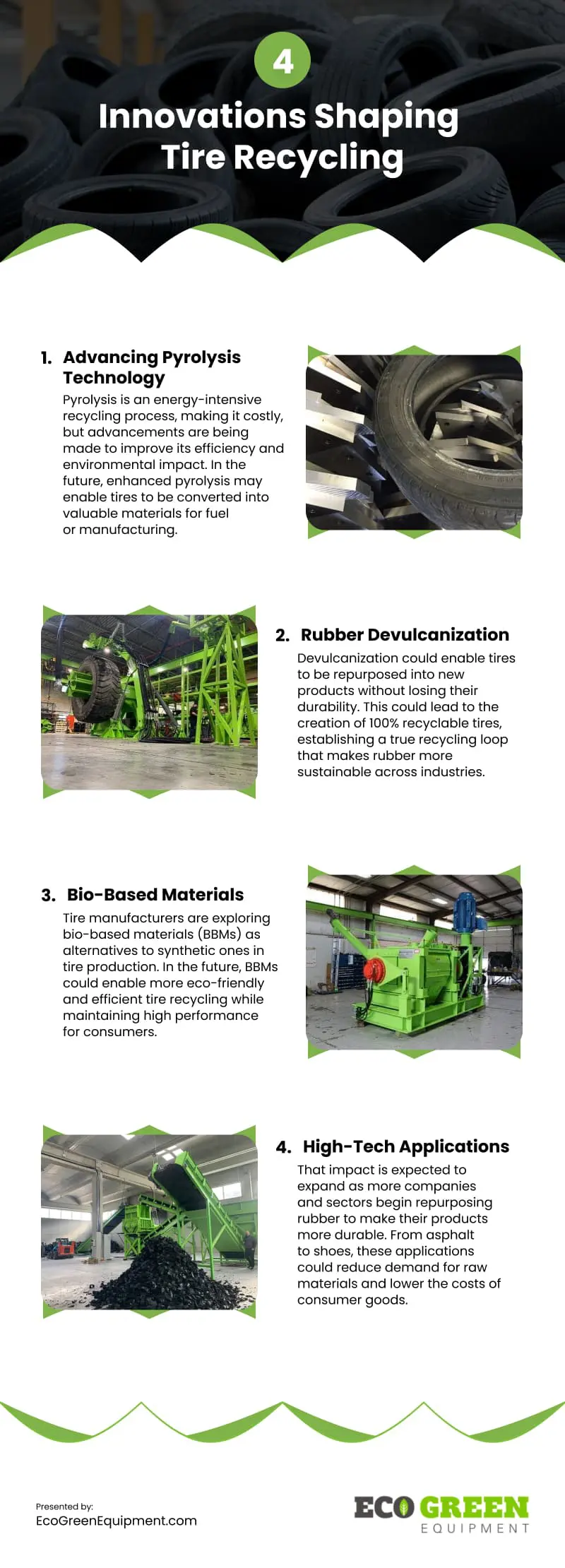
The future of tire recycling is being reshaped by innovative technologies aimed at making the process more sustainable and cost-effective. Pyrolysis, a technique that breaks down tires into reusable materials, is undergoing advancements to improve its energy efficiency and reduce environmental impact. These improvements could make pyrolysis a viable option for creating valuable outputs, such as fuel or raw materials for manufacturing.
Rubber devulcanization is another promising development, offering the potential to recycle tires into new products without compromising their durability. This breakthrough could pave the way for fully recyclable tires, fostering a circular economy in the rubber industry. The introduction of bio-based materials (BBMs) in tire production represents another leap forward. By replacing synthetic components with eco-friendly alternatives, BBMs could simplify recycling processes while delivering high-performance tires.
High-tech applications of recycled rubber are expanding as well. Industries are repurposing rubber for diverse uses, from more durable asphalt to eco-conscious consumer goods like shoes. These advancements not only reduce the need for raw materials but also lower production costs, promoting sustainability on a broader scale. Together, these innovations signal a transformative future for tire recycling, balancing environmental responsibility with economic efficiency.
source: https://ecogreenequipment.com/the-future-of-end-of-life-tire-recycling-in-2025-and-beyond/
Comments
Download this infographic.
